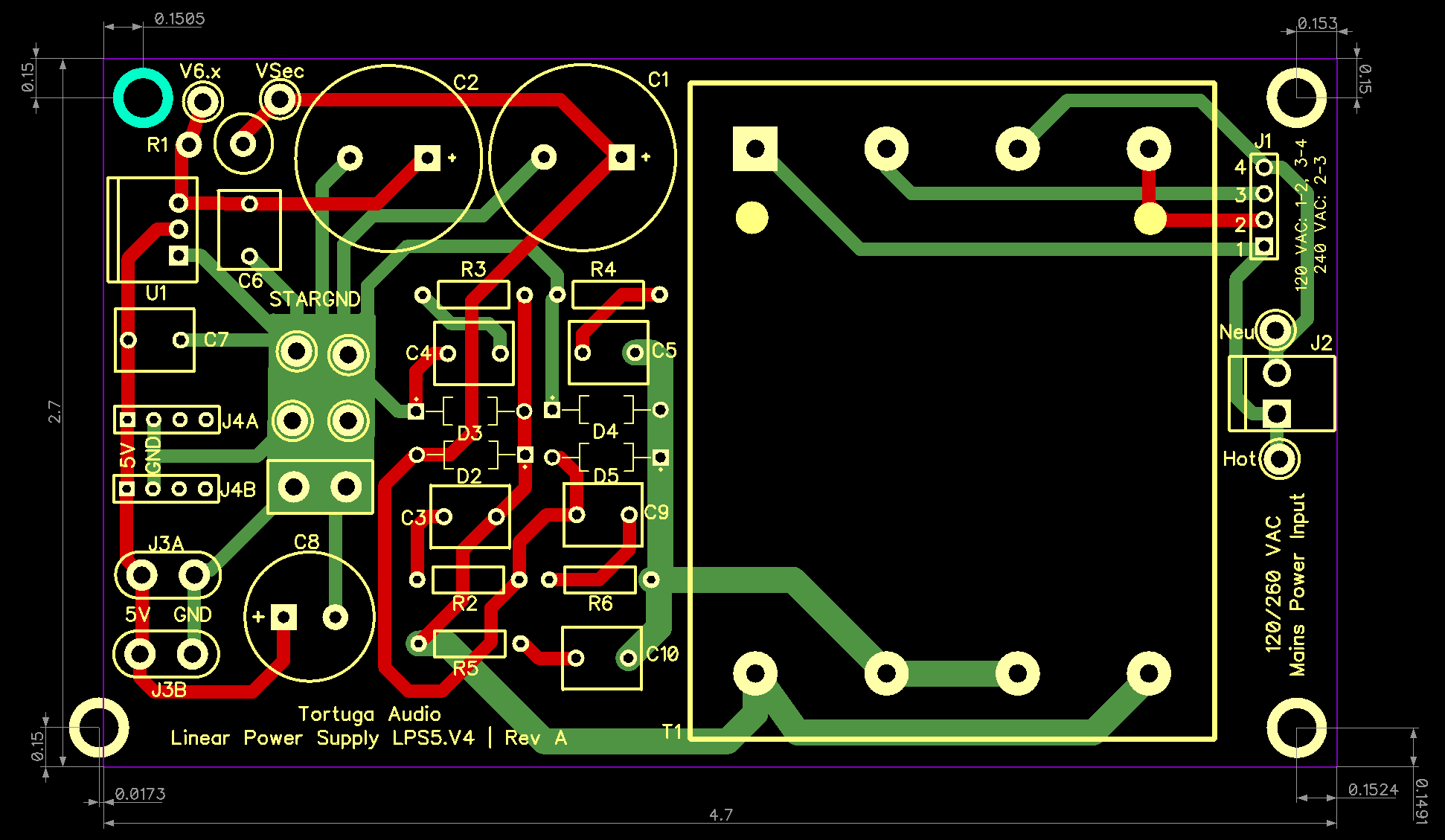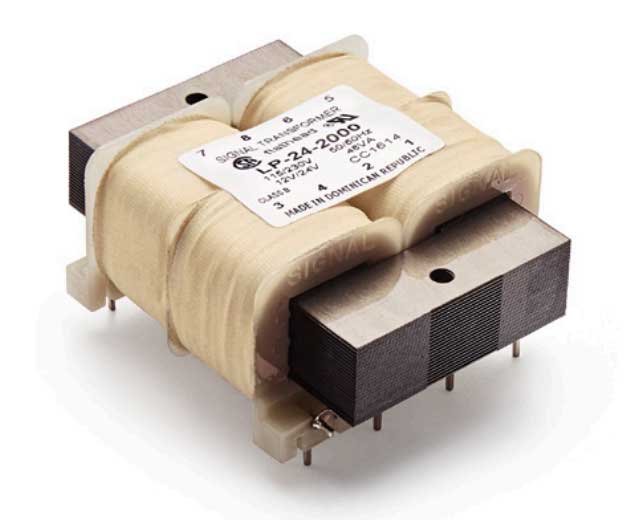About this manual

This manual is being frequently edited and updated and is subject to change without notice.
This manual describes the design basis, hardware and operation of the LPS5.V4 linear power supply. The LPS5.V4 is a classic linear power supply that provides up to 1 amp of clean 5 volt DC power. It’s designed specifically to power Tortuga Audio’s V4 series of LDR based stepped attenuator and preamp controller including its optional SSPB.V4 solid state preamp buffer.

The LPS5.V4 in brief
The optional LPS5.V4 provides low noise 5 volt power to the ePot.V4 stepped attenuator & preamp controller and the optional SSPB.V4 solid state preamp buffer board.
While there are a plethora of 5 volt power supply options out there, most utilize switching technology that is typically quite noisy and poorly regulated and not optimized for low noise audio applications. The Tortuga LPS5 is a fully analog linear power supply designed to deliver regulated low-noise 5 volt power. The key features of the LPS5 are listed in the table below.
| Parameter | |
|---|---|
| Output | – 5 volts DC – Regulated – up to 1 amp – low noise (< 1 millivolt) – out via solder lugs & JST 4 pin header |
| Input | – AC mains – 120 or 240 VAC – selectable via 4 pin header with jumpers – in via solder lugs or robust pin header |
| Transformer | – 12 VA – semi-toroidal – low EMI/noise – low hum – high efficiency |
| Rectification | – full bridge – fast recovery – snubbers on each diode – snubber on transformer secondary |
| Filtering | – high quality electrolytic smoothing capacitors – effectively eliminates ripple. – 1st order filter suppresses higher frequencies |
| Bypass | – liberal use of high quality polypropylene film capacitors for bypassing & snubbing |
| Regulation | – Regulated 5 volt output – Default LDO LM1117 linear 5 volt regulator – optional high performance Sparkos Laboratories super regulator |
| Star Grounding | – Multiple ground solder pads or fastab for connecting all system grounds to a common point |
What is a linear power supply?
The LPS5 is a classic linear analog power supply that provides up to 1 amp of 5 volt DC power . It has no digital or switching power supply elements,
A linear power supply takes incoming AC house voltage and runs it through a transformer to reduce its voltage to within a target range. . This lower voltage AC is then converted to raw DC by a rectifier circuit made up of a series of diodes. The resulting raw pulsating DC signal is then run through one or more large filter capacitors to smooth out these pulsations. Finally, a linear voltage regulator (a complex integrated circuit) dissipates excess energy as heat as it maintains a constant output voltage, regardless of input fluctuations or changes in the connected load.

The primary advantage of a linear power supply is its exceptionally low output noise and ripple, providing a very clean DC output. This makes it the preferred choice for applications such as audio preamplifiers where hum, distortion and inaccurate measurements can negatively impact overall system performance.
The downside of linear power supplies is that they are inherently inefficient, often converting a significant portion of the input power into heat. This inefficiency necessitates larger components, including bulky transformers and (usually) heat sinks, making them heavier and physically larger than more modern switching power supplies. While simple and reliable, their size and lower efficiency can make them less suitable for high-power or space-constrained applications.
Tortuga Audio chose a linear power supply over a switching power supply because it provides the highest quality of power with the fewest downsides, albeit at a higher cost.
The transformer
The LPS5.V4 uses a semi-toroidal transformer that achieves almost the same performance as a full toroidal transformers while presenting a physically lower and more compact profile.
l Rev A version of the ePot.V4 board was released in December, 2024 and is shown below with annotation. Individual parts on the V4 board are identified by their reference designator (J2, U4, C18) and most are discussed in the sections below.

